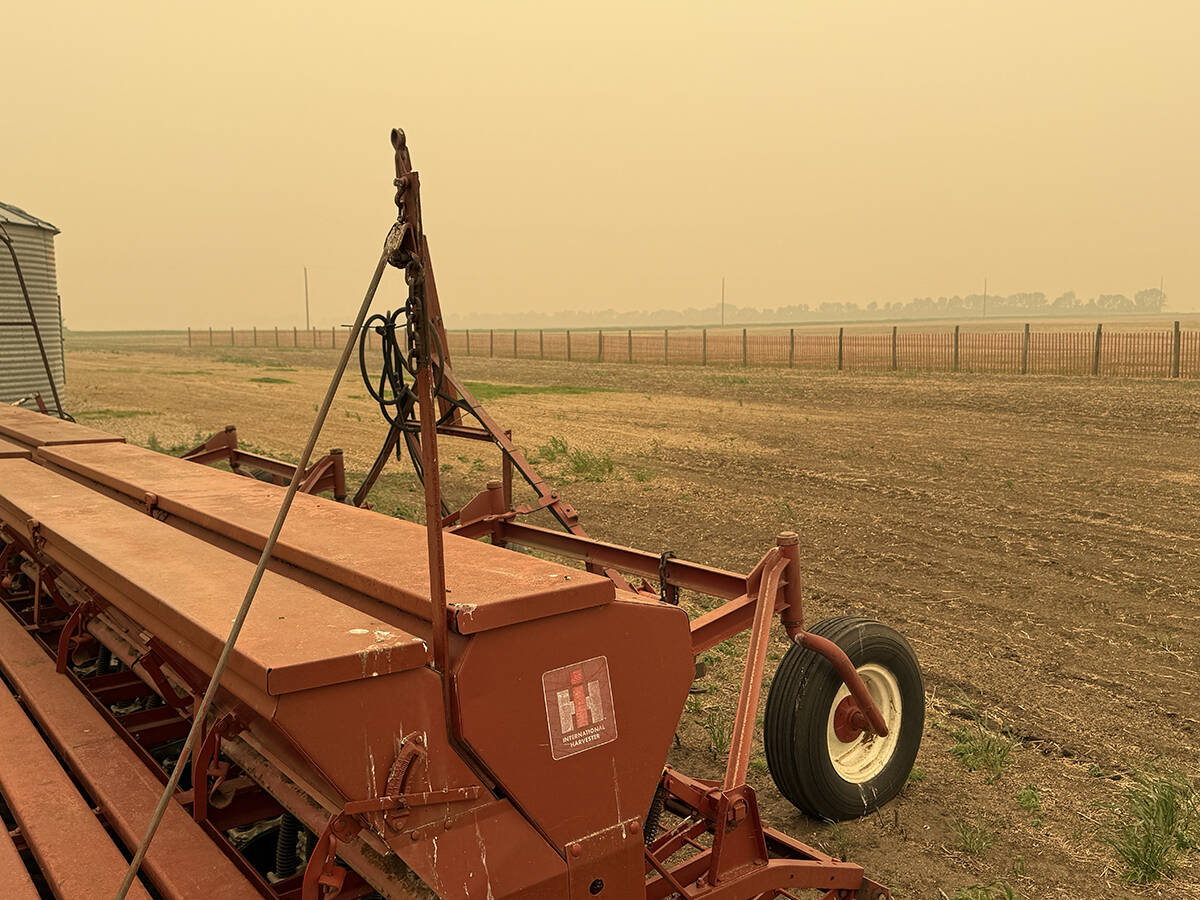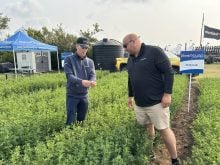Farms may be smaller than those in the West, but they also deal with succession planning, economics and sustainability
HALIFAX — Nova Scotia farms may be small compared to most Prairie operations, but they face similar issues.
Farmers on a panel at the Canadian Farm Writers Federation annual conference in early October said succession planning, economics and sustainability are among them.
Amber Creamer, policy manager with the provincial agriculture department, said there are 2,050 farmers in the province, and two-thirds have operating revenue of less than $100,000. Slightly more than 10 per cent claim revenue of more than $1 million.
Read Also

Wildfires have unexpected upside this year
One farmer feels smoke from nearby wildfires shrouded the July skies and protected his crop from the sun’s burning rays, resulting in more seeds per pod and more pods per plant.
Farm cash receipts in 2023 were $757.2 million, including government payments. Supply managed farms account for about half of those receipts.
However, the province also exports about $494.8 million worth of products each year; 228 products go to 75 markets.
The United States is a main market for beans produced at Webster Farms, owned by Annapolis Valley First Nations, said farm manager Jordan Eyamie.
She started working at the farm as an inventory manager when the Webster brothers still owned it. With no one in the family to take it over, they sold the operation to the Mi’kmaq.
The farm produces rhubarb, strawberries, raspberries in the field and under tunnels, dry beans, rye and barley.
While fruit lends itself well to a local market, Eyamie said that doesn’t always work out so well. Many in the industry believe retailers overbuy cheaper produce from Mexico or the United States, even though local suppliers have already promised a certain supply.
Eyamie said fresh loads will be rejected for various reasons, even though the same quality control is used all the time.
For dry beans, sales became unworkable for reasons no one could ever explain, she said.
“Eventually I just pulled out, and honestly, I send most of my beans to the U.S.,” she said.
“We get shipping paid for.”
In Canada they would have to pay for shipping and accept prices the grocers want to pay, even though mark-up is significant,
Lori Kittelsen operates an apiary with her husband, Paul, near Truro. They are a first generation farm and have 2,000 colonies. They work closely with the blueberry industry for pollination.
The couple has three children, none of whom are currently on the farm. They employ two local people and for the past two years have hired two temporary foreign workers.
They too have had interesting experiences trying to sell locally.
“Large retail is very challenging to work with,” Kittelsen said.
“They give local food, from the farmer’s perspective I would say, lip service.”
Local producers have to jump through more hoops to get their products into retailers, and one time when they weren’t paid, the store didn’t take responsibility.
“It became my problem to try to figure out how to run their system to tell them to pay me,” she said.
Small independent grocers, on the other hand, are easy to deal with.
Second-generation farmer Joseph Leck is also near Truro, where his family runs a 40-cow dairy and 40-ewe sheep operation.
“We do all our own forage and we make enough to sell some,” he said.
He has sold lamb meat off the farm, and for the last few summers his wife has had a small farm stand with mixed results.
Some weeks business is good and other weeks no one buys.
“People say they want to support local, but they don’t put their money where their mouth is,” he said.
Kittelsen said she has had many conversations at farm markets where people think the product should be cheaper than on retail shelves.
“They want you to stand there with no reward in terms of your time doesn’t matter,” she said.
All said succession planning is tricky.
For Leck, the hardest part was that his father couldn’t make a decision.
“I basically looked at him one time and said, ‘listen, you hold all the cards. You tell me what you want and then I’ll tell you whether I can do it or not,’ ” he said.
Older men often don’t want to admit they can no longer do what they once did, he added.
He said they also have to realize a business is worth what it can cash flow, not the sum of its assets.
Kittelsen said they helped some of their employees set up their own operations by informally mentoring them.
She said she is worried that large operations will buy up all the smaller farms because they have the money.
“I think it lies on the shoulders of the current generation that’s looking to exit. If they want to preserve the industry, to have some sort of diversity in size, they need to be creative in how they can help facilitate those assets moving to the next generation,” she said.
At the same time, young people have to be creative about getting in. Kittelsen said she would tell them to slow down a little bit because they can’t have it all immediately.
She said in the bee world it’s becoming more difficult to predict timing of things like blueberry pollination. It seems to be happening earlier every year, yet the bee life cycle can’t be changed.
Beekeepers have to take their honey at a certain time in order to apply mite treatments before the bees head into winter.
“The honey flow this year for the fall was quite late, so in essence we missed a lot of that as a crop for us. We get the benefit of it in terms of the bees can take it and store it and it reduces the feed we have to give, but we do miss it in terms of a product that we can sell,” said Kittelsen.
Eyamie, who has only been at Webster Farms for five years, said strawberry production has suffered the last two years due to rain and heat. Hurricanes have ripped off the plastic tunnels.
“My biggest concern is the fact that we don’t get cold winters the way we used to,” said Leck.
He needs a good freeze to kill parasites in sheep pastures. Parasites are hitting two weeks earlier than they used to, and this year included species he doesn’t usually find.
“I know people love the idea of pasturing animals, but it is getting more challenging,” he said.
Eyamie said Webster Farms has been working with a Living Lab and is part of a land swap project. The former owners were only doing a beans and rye rotation because they were getting out of farming, and as a result organic matter was less than two per cent, she said.
She was presented with the land swap idea in which cattle producers would put their animals on a field of her choosing for three years. She will then go back into beans and see what the difference is. The project is just in its second year.
The farm is also one of two in the province doing a season extension project with long cane raspberries.
Traditionally the fruit is grown outside in the ground, but these are grown in semi-permanent high tunnels in a soilless substrate. They can grow different varieties and extend harvest well into October.
















